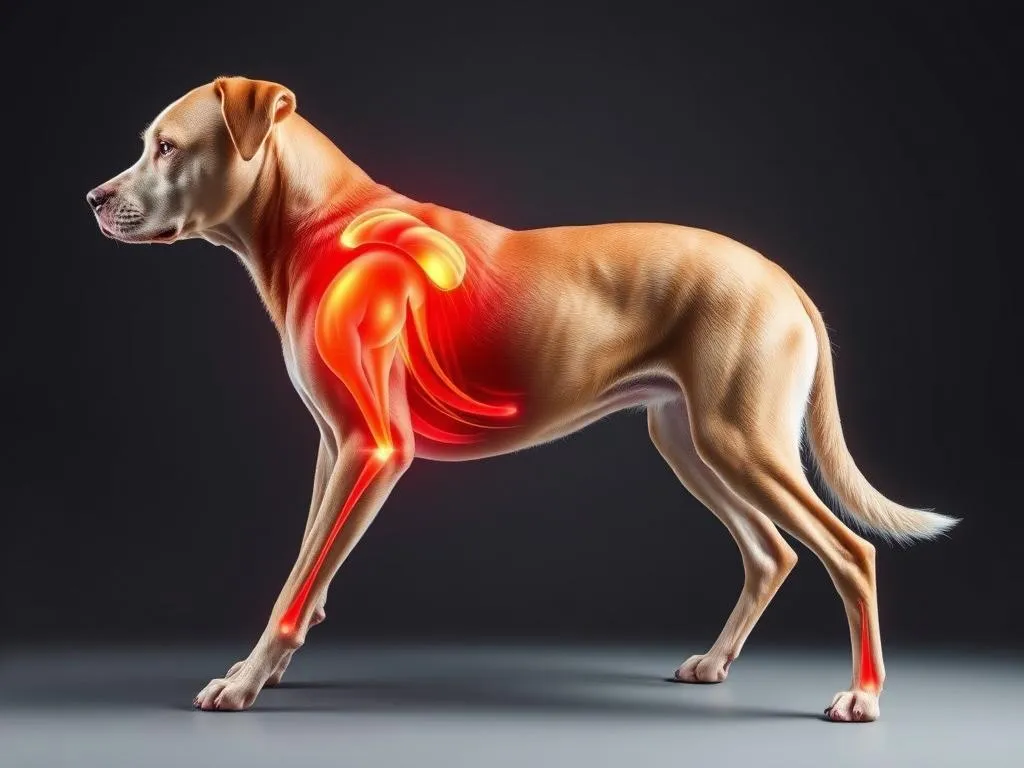
Introduction
Sciatic nerve injury in dogs is a significant concern for pet owners, as it can profoundly affect a dog’s mobility and quality of life. Understanding the causes and symptoms of this condition is crucial for early detection and effective treatment. In this article, we aim to educate pet owners about the sciatic nerve’s function, common causes of injury, symptoms to watch for, diagnostic methods, treatment options, and recovery processes. By recognizing the signs and seeking veterinary advice promptly, you can help your furry friend regain their vitality.
Understanding the Sciatic Nerve
What is the Sciatic Nerve?
The sciatic nerve is the largest nerve in a dog’s body, extending from the lower spine down to the hind legs. It plays a vital role in transmitting signals between the brain and the muscles in the hind limbs, enabling dogs to walk, run, and jump. A healthy sciatic nerve is essential for maintaining a dog’s mobility and overall well-being.
Anatomy of the Sciatic Nerve
The sciatic nerve originates from the nerve roots in the lumbar and sacral regions of the spinal cord. It travels through the pelvis, down the back of the thigh, and branches out to innervate various muscles and skin areas in the hind legs. Given its extensive reach, any injury or damage to the sciatic nerve can lead to significant mobility issues and pain.
Causes of Sciatic Nerve Injury in Dogs
Common Causes
Several factors can lead to sciatic nerve injury in dogs:
- Trauma: Accidents such as car collisions or falls can cause direct damage to the sciatic nerve.
- Herniated Discs: Intervertebral disc disease can result in herniated discs that press on the sciatic nerve roots.
- Tumors or Growths: Abnormal growths can exert pressure on the nerve, leading to injury.
- Infections: Certain infections can affect nerve function and lead to pain and mobility issues.
Risk Factors
Certain dogs may be at higher risk for sciatic nerve injuries:
- Age and Breed Predispositions: Older dogs and certain breeds, such as Dachshunds and Bulldogs, are more susceptible.
- Pre-existing Health Conditions: Dogs with conditions like hip dysplasia may be more prone to injuries.
- Activity Levels and Lifestyle: Active dogs or those exposed to high-impact activities may face a greater risk.
Symptoms of Sciatic Nerve Injury in Dogs
Physical Symptoms
Recognizing the physical signs of sciatic nerve injury in dogs is crucial:
- Limping or Difficulty Walking: A noticeable limp or reluctance to put weight on a hind leg can indicate nerve issues.
- Weakness in Hind Legs: Dogs may show signs of weakness, such as struggling to stand or support themselves.
- Pain Responses: Whining, yelping, or flinching when touched can indicate pain associated with nerve injury.
Behavioral Changes
In addition to physical symptoms, behavioral changes can also signal a problem:
- Reluctance to Move or Play: Dogs may become less active or avoid activities they once enjoyed.
- Changes in Posture: Altered sitting or lying positions can suggest discomfort in the hindquarters.
- Signs of Discomfort: Excessive licking or biting at the hind legs may indicate pain or irritation.
Diagnosis of Sciatic Nerve Injury
Veterinary Examination
If you suspect your dog has a sciatic nerve injury, it’s essential to consult a veterinarian. The examination may include:
- Physical Assessment Techniques: The vet will evaluate your dog’s range of motion, reflexes, and pain response.
- Neurological Assessments: These tests help determine the extent of nerve function and any deficits present.
Diagnostic Imaging
To confirm a diagnosis, your vet may recommend imaging studies:
- X-rays: While useful for identifying fractures or bone-related issues, X-rays have limitations in visualizing soft tissues.
- MRI or CT Scans: These advanced imaging techniques provide detailed views of the spinal cord and surrounding tissues, helping identify herniated discs or tumors.
- Electromyography (EMG): This test assesses nerve and muscle function, aiding in determining the severity of the injury.
Treatment Options
Conservative Management
In some cases, conservative management may be the first line of treatment:
- Pain Management: Your vet may prescribe medications such as NSAIDs or analgesics to alleviate pain.
- Rest and Activity Modification: Limiting your dog’s activity and providing a comfortable space to rest is essential for healing.
- Physical Therapy and Rehabilitation Exercises: Veterinary physiotherapy can help restore mobility and strength.
Surgical Intervention
If conservative measures are insufficient, surgical options may be considered:
- Indications for Surgery: Severe cases with significant nerve compression or damage may require surgical intervention.
- Common Surgical Procedures: Procedures may include decompression of the nerve or removal of tumors.
- Risks and Benefits: While surgery can provide relief and restore function, it also carries inherent risks that should be discussed with your vet.
Recovery and Rehabilitation
Recovery Process
Recovery timelines vary based on the severity of the injury and the treatment approach:
- Expected Timelines for Recovery: Mild injuries may heal within weeks, while more severe cases may take months.
- Importance of Follow-Up Veterinary Visits: Regular check-ups ensure your dog is recovering correctly and allow adjustments to the treatment plan as needed.
Rehabilitation Techniques
Effective rehabilitation can significantly enhance recovery:
- Role of Physical Therapy: A qualified therapist can develop a tailored program to improve mobility and strength.
- Home Exercises: Simple exercises like gentle stretching and range-of-motion activities can aid recovery.
- Use of Assistive Devices: Dog wheelchairs or harnesses may help support your dog during the recovery phase.
Preventing Sciatic Nerve Injuries
Safe Activity Practices
Preventive measures can help reduce the risk of sciatic nerve injuries in dogs:
- Recommendations for Exercise and Play: Regular, controlled exercise can help maintain overall health and fitness.
- Tips for Dog-Proofing the Home: Removing hazards and ensuring a safe environment can prevent accidents.
Regular Veterinary Check-ups
Routine health assessments are vital for detecting potential issues early:
- Importance of Routine Health Assessments: Regular vet visits allow for monitoring and preventive care.
- Early Detection of Potential Issues: Identifying problems early can lead to more effective treatment and better outcomes.
FAQs About Sciatic Nerve Injury in Dogs
- What are the initial signs of a sciatic nerve injury?
-
Limping, difficulty getting up, and signs of pain are early indicators.
-
Can all breeds of dogs get sciatic nerve injuries?
-
Yes, while some breeds may be more predisposed, any dog can experience nerve injuries.
-
How can I help my dog during recovery?
-
Follow your vet’s recommendations, provide a comfortable environment, and engage in approved exercises.
-
Is surgery always necessary for a sciatic nerve injury?
-
Not always; many dogs can recover with conservative management, but surgery may be required in severe cases.
-
Are there long-term effects after recovery?
- Some dogs may experience lingering weakness or sensitivity, but many can return to normal activities with time and therapy.
Conclusion
Understanding sciatic nerve injury in dogs is crucial for ensuring your pet’s health and happiness. Recognizing the symptoms early, seeking veterinary advice, and following through with appropriate treatment can make a significant difference in your dog’s recovery and quality of life. If you notice any signs of discomfort or mobility issues, don’t hesitate to contact your veterinarian. Your dog’s well-being is paramount, and timely intervention can lead to a happier, healthier life for your furry friend.
By taking proactive steps in your dog’s care, you can help prevent injuries and ensure they remain active and engaged for years to come.









